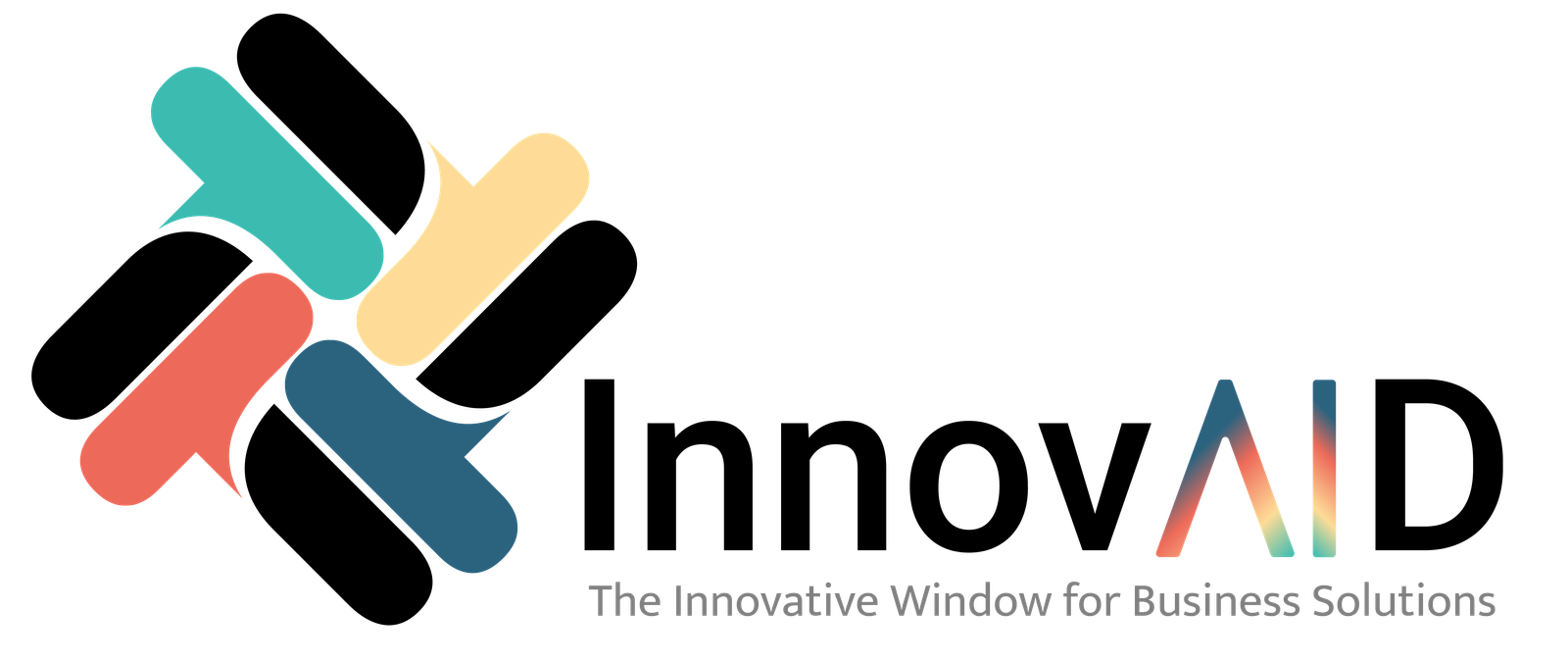Beyond Automation: How AI Transforms Organizational Decision-Making

AI is no longer just about automation. It’s about intelligence, strategy, and decision-making. While automation has streamlined workflows and eliminated repetitive tasks, the real revolution is happening at a deeper level: AI is becoming a key player in strategic decision-making for organizations worldwide.
Businesses and NGOs alike are shifting from simply using AI to automate processes to leveraging AI insights to make smarter, faster, and more data-driven decisions. But what does this really mean?
At InnovAID Solutions, we’ve seen firsthand how AI-powered decision-making tools are reshaping industries. Whether it’s optimizing business strategies, funding proposals, or customer engagement, AI is proving to be more than just a productivity booster—it’s an advisor, analyst, and strategist.
Let’s dive into how AI is driving decision-making across industries and what it means for the future of business.
🔹 From Automation to Intelligence: The AI Evolution
For years, AI has been synonymous with automation. That is; helping businesses streamline operations, reduce costs, and improve efficiency. But AI’s role is expanding beyond automation into something far more powerful: decision augmentation.
Instead of just handling repetitive tasks, AI is now:
✔ Analyzing massive datasets in real-time to provide deeper insights
✔ Predicting future trends based on historical and real-time data
✔ Optimizing strategies by identifying risks and opportunities
✔ Enhancing human decision-making with AI-powered recommendations
🔍 Example: Instead of just automating customer support, AI can analyze past interactions, predict customer concerns, and recommend personalized solutions before a customer even reaches out.
This shift means AI is no longer just a tool. It’s a strategic partner.

🔹 How AI is Revolutionizing Decision-Making Across Industries
AI-powered decision-making is impacting every industry. Here’s how:
1️⃣ Business Strategy & Operations
✔ AI-Driven Market Analysis – AI continuously scans market trends, competitor strategies, and consumer behavior to help businesses stay ahead of the curve.
✔ Risk Management – AI identifies potential risks, helping leaders make data-backed, proactive decisions.
✔ Strategic Forecasting – AI models help businesses predict future demand, revenue, and market shifts, making long-term planning smarter.
🔍 Example: A retail company uses AI to forecast demand for specific products, avoiding overstocking or shortages—boosting revenue while minimizing waste.
2️⃣ Proposal Writing & Grant Funding (NGOs & Businesses)
✔ AI-Optimized Proposal Writing – AI tools, like ProPilot from InnovAID Solutions, analyze past successful proposals and can provide real-time content suggestions to maximize approval chances.
✔ Funding Opportunity Matching – AI scans thousands of funding opportunities and matches NGOs to the most relevant ones based on their mission.
✔ Data-Backed Impact Measurement – AI helps organizations quantify their social impact, making their funding proposals more compelling and evidence-based.
🔍 Example: Instead of manually researching grants, an NGO uses AI-powered proposal writing to customize applications in minutes, not weeks.
Also read: AI-Powered Proposal Writing: How NGOs Can Secure Funding Faster?
3️⃣ Customer Experience & Personalization
✔ AI-Powered Recommendations – Businesses can offer personalized experiences based on AI-driven customer insights.
✔ Sentiment Analysis – AI analyzes customer reviews, feedback, and social media to understand consumer emotions and trends.
✔ Predictive Engagement – AI identifies when a customer is likely to churn and triggers proactive outreach before it happens.
🔍 Example: An AI-powered chatbot doesn’t just answer FAQs—it predicts customer needs, offering solutions before they even ask.

4️⃣ Hiring & Talent Management
✔ AI-Powered Candidate Screening – AI analyzes resumes and matches applicants based on skills, experience, and company culture fit.
✔ Bias-Free Hiring – AI removes unconscious biases in recruitment by evaluating candidates based on data, not personal perceptions.
✔ Employee Retention Insights – AI identifies potential turnover risks by analyzing employee engagement data.
🔍 Example: Instead of spending weeks reviewing applications, HR teams use AI-driven hiring tools to shortlist top candidates instantly.
🔹 AI Doesn’t Replace Decision-Makers—It Enhances Them
One of the biggest misconceptions about AI is that it’s here to replace human decision-makers. The reality? AI is an enhancer, not a replacement.
💡 The AI + Human Formula for Smarter Decisions
✅ AI Handles:
- Data analysis at scale
- Pattern recognition
- Predictive modeling
- Repetitive and time-consuming tasks
✅ Humans Bring:
- Critical thinking
- Emotional intelligence
- Creativity and innovation
- Ethical and strategic judgment
The most successful organizations are not those that replace human intuition with AI, but those that combine AI-driven insights with human expertise.
🔍 Example: AI can predict which marketing campaign will perform best, but a human marketing expert understands brand storytelling, emotions, and cultural context.
🔹 The Future of AI-Driven Decision Making
Looking ahead, AI-powered decision-making will only become more advanced. What’s next?
✔ Explainable AI (XAI) – AI models will become more transparent, showing decision-making processes to improve trust.
✔ AI-Powered Boardrooms – Businesses will integrate AI into high-level strategic meetings, giving real-time data-driven insights.
✔ AI in Ethics & Compliance – AI will help detect bias, fraud, and ethical risks before they become major issues.
🚀 At InnovAID Solutions, we are committed to helping organizations leverage AI for better decision-making, increased efficiency, and long-term growth.
📢 Are You Ready to Leverage AI for Smarter Decisions
AI is no longer just about automation—it’s about intelligent decision-making that drives growth, efficiency, and innovation.
🔹 How is AI transforming decision-making in your industry?
🔹 What’s the biggest challenge your business faces in AI adoption?
Related Posts






